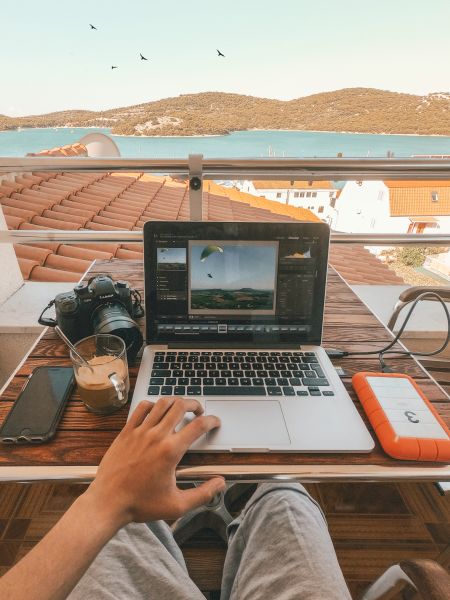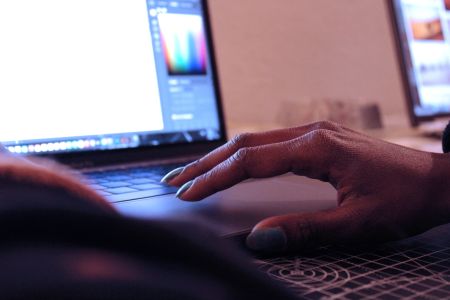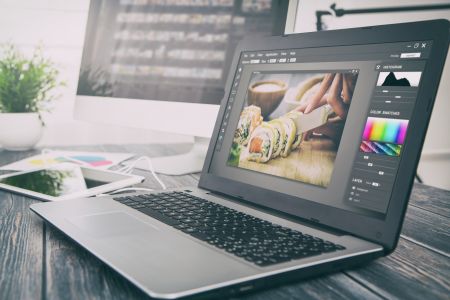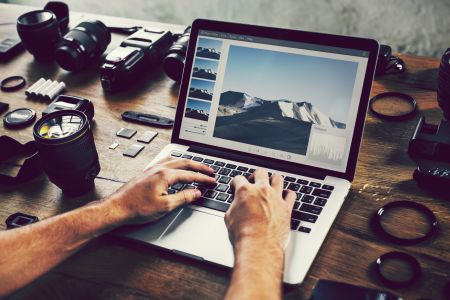Are there rules for successful photo editing?
Editing photos is a task that many photographers, whether amateur or professional, struggle with. Photos often look bland straight from the camera or smartphone. Once the photos have been edited, they can also quickly look unrealistic, which is not desirable.A good photo edit will make more of your photos, that's for sure. We've put together a few rules for you here to help you get started with simple photo editing. Uniqueness is what ultimately makes a good photo, and a good photo is almost invariably one that can evoke emotion in the viewer.

Basically, it is important to choose a good image for photo editing. Photo editing only makes sense if the source material is worth editing. If you want to edit a photo, you should already have an idea of how the photo should look after editing. So don't start aimlessly, but with a system. The photo and the photo editing should arouse emotions in the viewer.

Tips for photo editing!
When editing photos, avoid a mistake that many beginners make. Don't think that a bad photo can be saved by simple photo editing. If you start with a bad photo, you can't expect a stunning photo even with photo editing. It doesn't matter how much time you invest in photo editing. The most important rule is: start editing with a good picture. That is, only when you have really succeeded with a photo. Photo editing begins with the selection of the right image, which requires a good instinct. So be selective!

Once you have decided on a suitable image, imagine how you want your image to look in the end before you start editing. Most photographers start by trying out different photo editing methods and tools to improve their images. This is helpful to get to know everything, but it can be annoying when it comes to the actual photo editing. Don't experiment too much, but start the editing process calmly and with concentration. Think about how you want your picture to look. One recommendation is to think about art in general and your favourite photos. What makes an image attractive to you? Sometimes different exposures help to bring out specific details of an object in the photo. Once you have a sense of the style you like in your favourite photos, apply the same "looks" to your photos. Over time, you will develop your own style and more confidence in photo editing.
Image editing tips for more emotion in your images!
A good photo is a photo with which you can arouse the emotions of the viewer. If you reach this point, then your photography is successful. When it comes to everyday subjects, or subjects that are not usually directly related to emotions, it is not so easy to trigger the emotions of a viewer. But with the right photo editing, you can provoke them. Make your pictures dark and gloomy if you feel sadness and want to express this feeling through your pictures. Make your picture bright and cheerful if you feel happy. Your aim should be to express different emotions with your pictures. Choose one emotion and associate it with your photo.
Now, if you've taken a good picture and you've decided on a bright, light feeling, for example, you can quickly give your picture an appropriate look. By using a lot of saturation and contrast, each image will have a bright and happy feeling. Your goal should be to get a bright photo, so set the exposure appropriately. But make sure that nothing fades. Then edit the contrast of the image. The idea is to increase the white as much as possible to lighten the bright parts of the image. Only then do you reduce the black to increase the overall contrast.The overall image is now much brighter.

If you prefer to express the sad, sombre look with your chosen photo, it becomes a little more difficult. Due to many different factors, it is much more difficult to achieve a dark and gloomy look. Reduce the contrast if necessary, you may need to convert the image to black and white or reduce the colours significantly for a 'sinister' look. You should experiment a little until you get the desired result.
Another tip: Don't overdo it when editing your photos! Less is often more!





